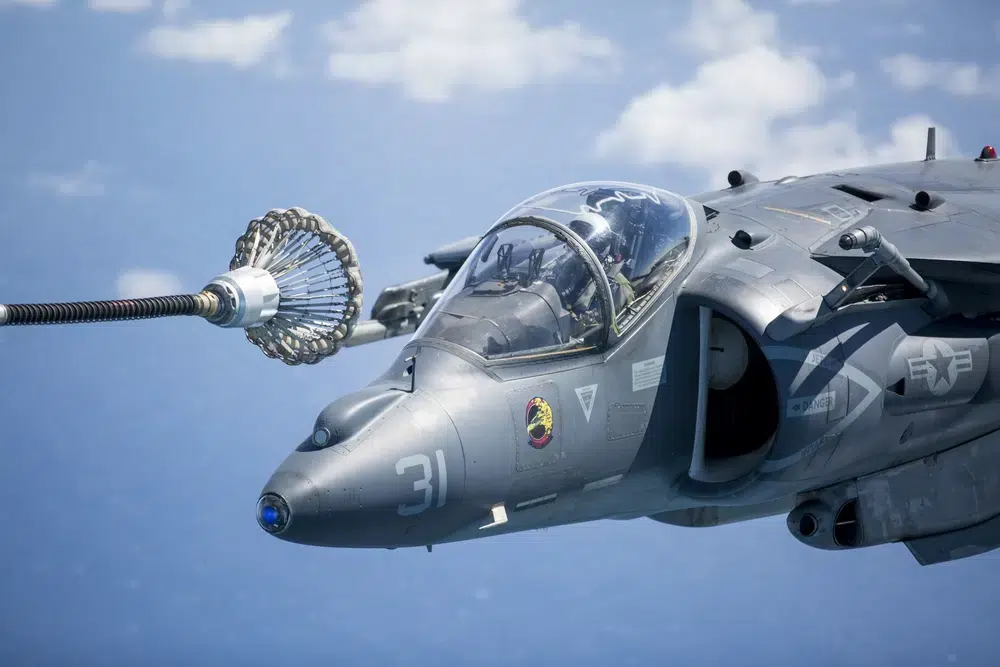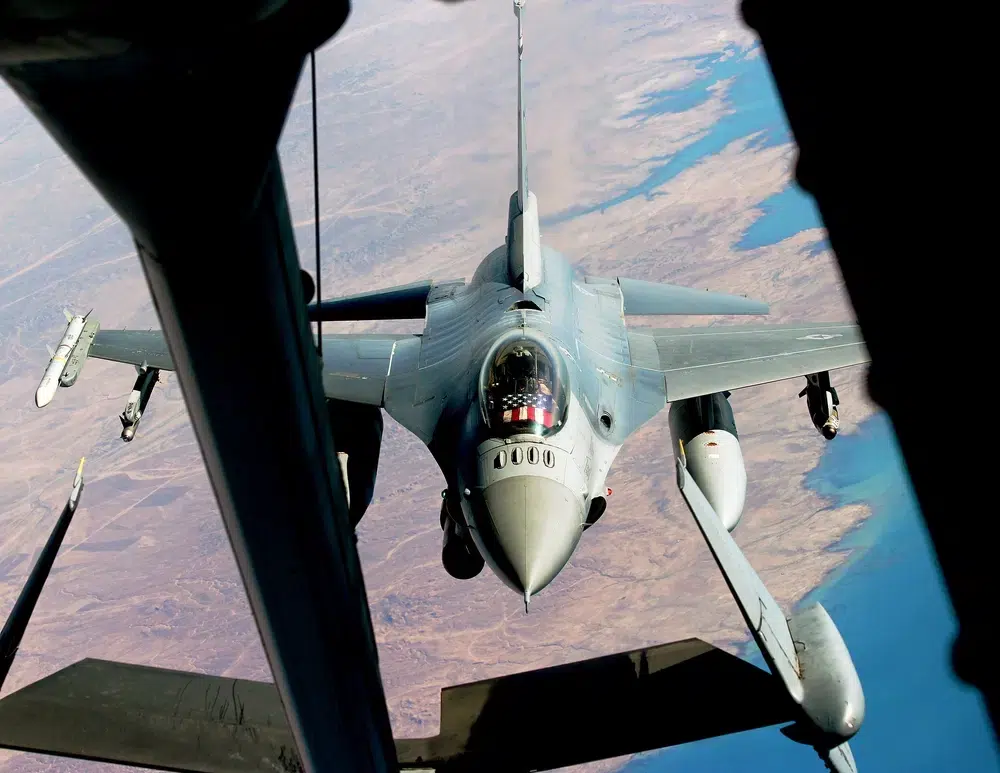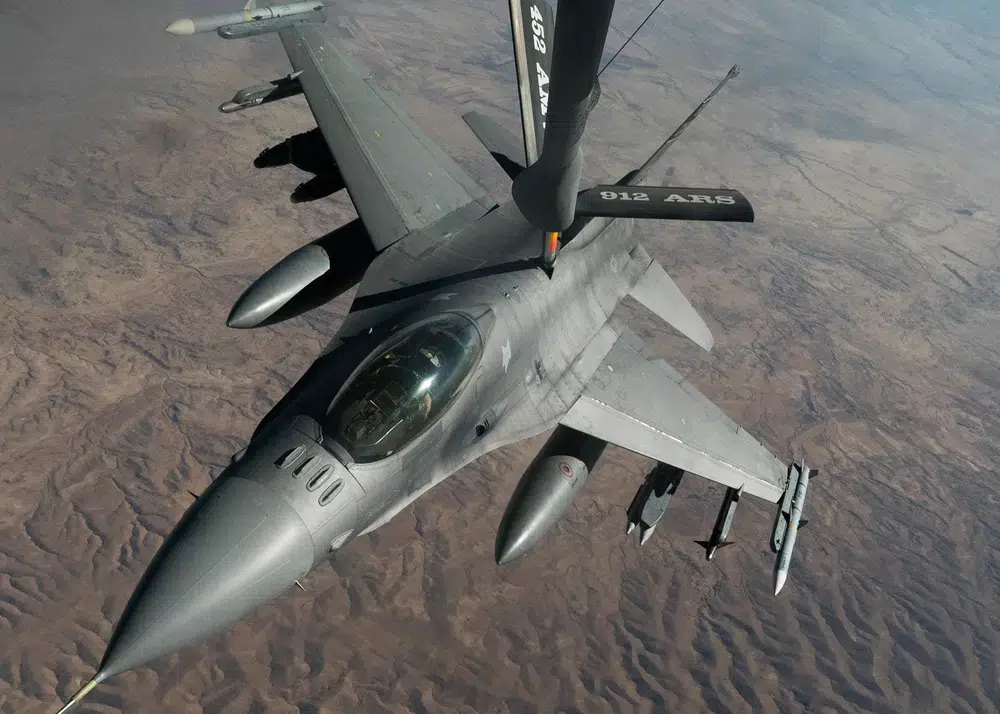Aerial refueling is one of the more dangerous tasks fighter pilots need to master.
Throughout pilot training, you’re taught the biggest mistake you can make is to hit something with your aircraft – which is why the first time you refuel in the air, it can be nerve-racking. The concept is to join up with a tanker – essentially a hollowed-out airliner filled with fuel – close to within a few feet and allow the tanker to connect a boom to your jet so it can transfer fuel to your aircraft.
I remember refueling for the first time in the skies above western Arizona. My flight lead, who was in another F-16, and I locked up the tanker with our radars and closed to within a few thousand feet. We then started our pre-refueling checklist, which is surprisingly simple” first, open your refueling receptacle so the jet can accept the tankers’ fuel; and next, turn off your radar, so you’re not radiating the crew in the tanker.

I closed to within 50 feet, at which point the tanker extended it’s boom and gave me clearance to proceed. The F-16 has a bubble canopy, which gives the pilot an incredible view – it feels like you’re floating in a chair with the jet strapped to your back. As I inched forward, the boom operator slowly swung the large boom several feet to my right as I glided underneath the tanker. With its 4-engines and 130-foot wingspan, the tanker extended out past my peripheral vision.
As I held position, I waited for the boom to connect to my jet. This was the most difficult part of the process as there could not be any relative movement between the jets – despite both traveling at nearly 350 mph. After what felt like a minute, but in reality only a few seconds, I felt the jet momentarily shake as the boom connected with my jet and the operator called “contact” over the radio.
At this point, I focused on the director lights, which are two rows of lights on the underside of the tanker that help us fly in the ideal position; one lets us know whether to go up or down, the other forward or aft.

The key to refueling is to make tiny movements with the stick and throttle. The F-16 is incredibly maneuverable, and even though the flight controls dampen when in refueling mode, it’s easy to overcorrect and fall out of position. This can often trigger a disconnect from the boom requiring you to start over again, or in some cases, damage both aircraft.
After about 5 minutes of holding position, the boom operator told me I was topped off, so I hit the disconnect button on the stick, releasing my jet from the boom. As I moved to the tanker’s right side, I closed my refueling receptacle and my flight lead moved into position to get his fuel. Although I had only been in the air for 20 minutes, I was exhausted from the amount of focus it took.

At this point, after a decade of flying fighters, I’ve tanked hundreds of times – on one sortie alone, I refueled 10 times. While deployed to Afghanistan, I had a dedicated tanker follow my 2-ship around the country for each mission so we could maintain persistent coverage. Just like anything, if you do it enough, it becomes routine.
I’m now an instructor on the F-35, teaching new pilots how to refuel. The problem now is breaking down something that has become second nature. The students don’t have any point of reference from which to draw. It’s similar to teaching someone how to ride a bike for the first time: surprisingly difficult to do well.
This article was originally published in October 2020. It has been edited for republication. You can follow Hasard Lee’s YouTube channel here.
Read more from Sandboxx News
- How an F-16 dodged 6 surface-to-air missiles in an airstrike gone wrong
- The Air Force created a F-35 ‘Frankenbird’ for the first time – with help from the A-10
- NORAD will track Santa’s hypersonic gift-delivery operations
- The mystery surrounding HK’s SMG 2 and its purpose
- Here’s why the F-15EX is the deadliest Eagle to date

